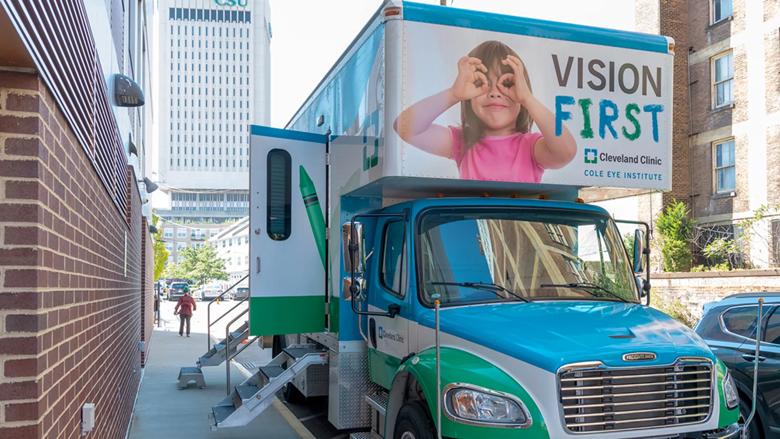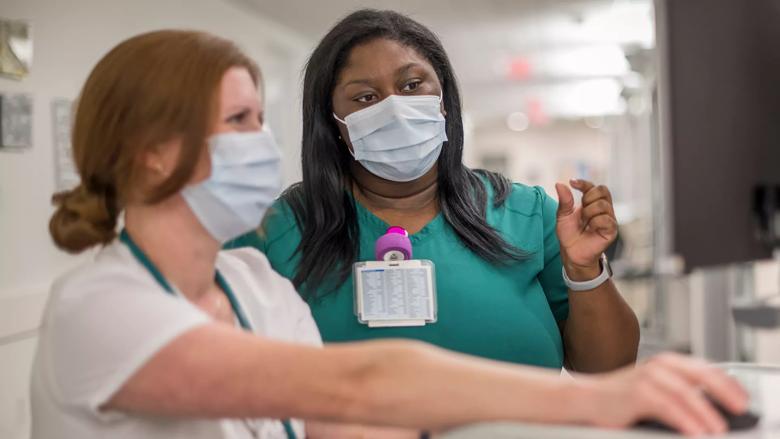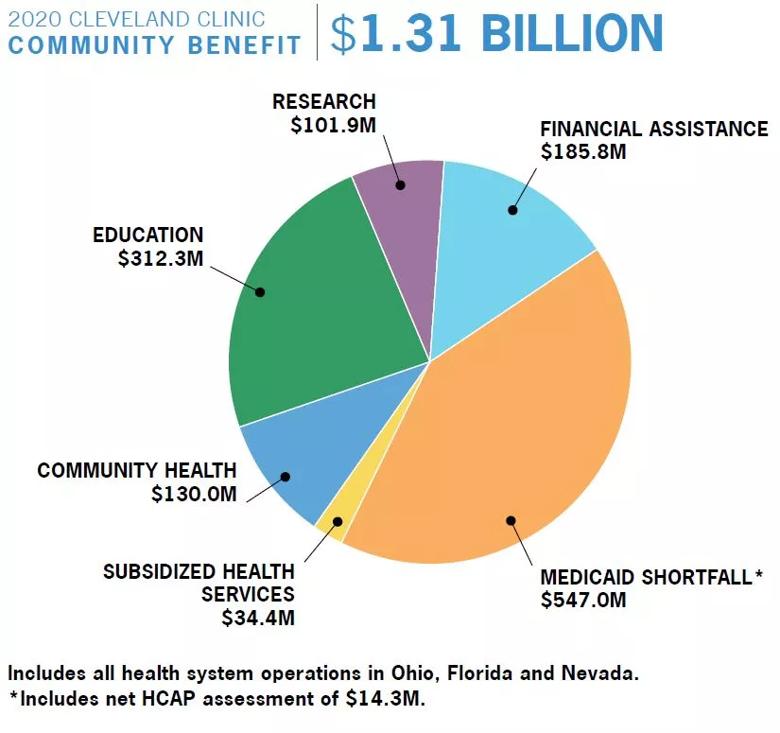Annual benefit report details health system's commitment to research, education, COVID-19 support, community health
images: 0
video: 2
audio: 0
text: 0
Content is property of Cleveland Clinic and for news media use only.





Cleveland Clinic released its latest community benefit report indicating the health system contributed $1.31 billion in benefit for its operations in Ohio, Nevada and Florida. This marks an increase from $1.18 billion in 2019.
Cleveland Clinic’s community benefit is a measure of its investment to the community through education, research, financial assistance and Medicaid shortfall, subsidized services, and community programs. Community benefit is just one measure of the health system’s commitment to its neighbors and neighborhoods.
“We remain committed to serving our patients and investing in our community in order to create the healthiest communities for everyone,” said Cleveland Clinic CEO and President Tom Mihaljevic, M.D. “In addition to the traditional contributions we make to our communities’ wellbeing, we undertook numerous special initiatives in 2020 to protect public health and lessen the impact of COVID-19.”
As a nonprofit health system, Cleveland Clinic is a community asset with no owners, investors or stockholders. Any and all extra funds from operations are invested back into the health system to support patient care, research, education and charitable efforts.
Community benefit data is calculated in accordance with IRS Form 990 reporting guidelines. The primary categories for assessing community benefit include:
Cleveland Clinic’s financial assistance policy provides free or discounted care to patients with incomes up to 400% of the federal poverty level and covers both hospital care and employed physician services. Cleveland Clinic experienced an increase of 10% in financial assistance to patients unable to pay some or all of their bills. This reported financial assistance does not include “bad debt,” which is the amount of unpaid bills to the health system by patients who have the ability to pay. During the COVID-19 pandemic, Cleveland Clinic expanded its charity care policy to assist more patients experiencing financial hardships to ensure they had continued access to care.
The Medicaid program, which provides healthcare coverage for low-income families and individuals, is funded by state and federal governments. In many states, Medicaid payments have not been sufficient to cover the costs of treating Medicaid beneficiaries. Cleveland Clinic’s Medicaid shortfall remained consistent from 2019 ($553.8 million) to 2020 ($547.0 million). In Ohio, Cleveland Clinic is one of the largest Medicaid providers.
Subsidized services are clinical services provided to meet the needs of the community despite creating a financial loss. Examples include pediatric programs, psychiatric/behavioral health services, obstetrics, chronic disease management and outpatient clinics. Subsidized services increased more than 38% from 2019 ($24.9 million) to 2020.
Community health improvement programs serve the vulnerable and at-risk populations, in addition to the broader community. These programs address documented health needs of the community and align with community health needs assessments, including free wellness initiatives, health screenings/education and enrollment assistance in government-funded health programs.
In 2020, Cleveland Clinic provided or contributed to community health improvement for a total of $130 million, including traditional activities and COVID-19 expenses.
Education programs include accredited training for physicians, residents, nurses and allied health professionals who will care for both the local and broader community in the future. For 2020, Cleveland Clinic’s total expenses in support of education for health professions was $312.3 million, up from $306.0 million in 2019.
Research into diseases and cures is an investment in the long-term health of the community. Cleveland Clinic’s contribution for medical research increased to $101.9 million, up from $88.8 million in 2019.
Last year, COVID-19 highlighted the significance of research as a community benefit. Cleveland Clinic researchers developed the first risk-prediction model for healthcare providers to forecast a patient’s likelihood of testing positive for COVID-19, as well as their outcome from the disease.

“This community benefit report is one measure of our commitment to ensure better health for the patients and the neighborhoods we serve,” Dr. Mihaljevic said. Recent efforts include expanding a mobile pediatric school-based program, providing high-speed internet to neighborhoods where it did not exist and expanding the ASPIRE nurse scholar program. Dr. Mihaljevic added, “We will continue to look for opportunities and partnerships that improve the health and well-being of our neighbors and neighborhoods, including a significant focus on lead paint remediation and infant mortality efforts.”
Cleveland Clinic’s community benefit report is available online on its website.
Cleveland Clinic is a nonprofit multispecialty academic medical center that integrates clinical and hospital care with research and education. Located in Cleveland, Ohio, it was founded in 1921 by four renowned physicians with a vision of providing outstanding patient care based upon the principles of cooperation, compassion and innovation. Cleveland Clinic has pioneered many medical breakthroughs, including coronary artery bypass surgery and the first face transplant in the United States. Cleveland Clinic is consistently recognized in the U.S. and throughout the world for its expertise and care. Among Cleveland Clinic’s 82,600 employees worldwide are more than 5,786 salaried physicians and researchers, and 20,700 registered nurses and advanced practice providers, representing 140 medical specialties and subspecialties. Cleveland Clinic is a 6,728-bed health system that includes a 173-acre main campus near downtown Cleveland, 23 hospitals, 280 outpatient facilities, including locations in northeast Ohio; Florida; Las Vegas, Nevada; Toronto, Canada; Abu Dhabi, UAE; and London, England. In 2024, there were 15.7 million outpatient encounters, 333,000 hospital admissions and observations, and 320,000 surgeries and procedures throughout Cleveland Clinic’s health system. Patients came for treatment from every state and 112 countries. Visit us at clevelandclinic.org. Follow us at x.com/CleClinicNews. News and resources are available at newsroom.clevelandclinic.org.
Editor’s Note: Cleveland Clinic News Service is available to provide broadcast-quality interviews and B-roll upon request.